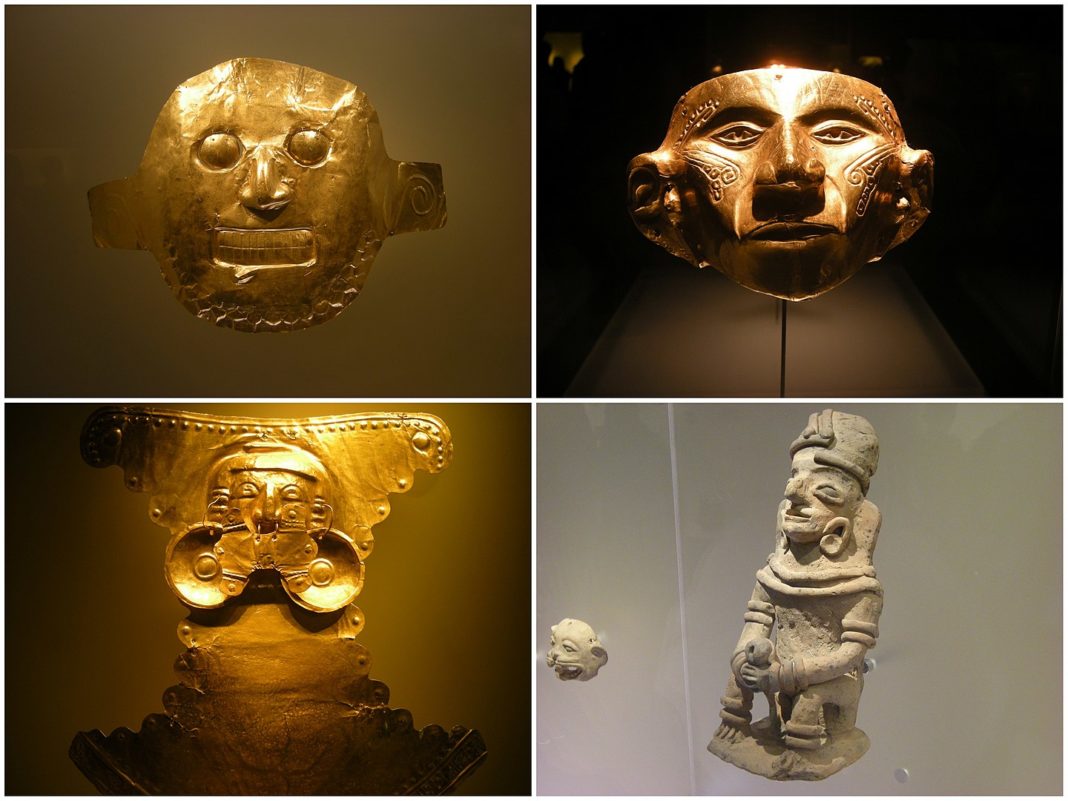The museum displays a selection of pre-Columbian gold and other metal alloys, such as Tumbaga, and contains the largest collection of gold artifacts in the world which has 34,000 gold pieces, each of which has its own incomparable beauty and historic value.. Together with pottery, stone, shell, wood, and textile objects, these items, made of a– to indigenous cultures – sacred metal, testify to the life and thought of the different societies which lived in present-day Colombia before the Spanish conquest of Americas.
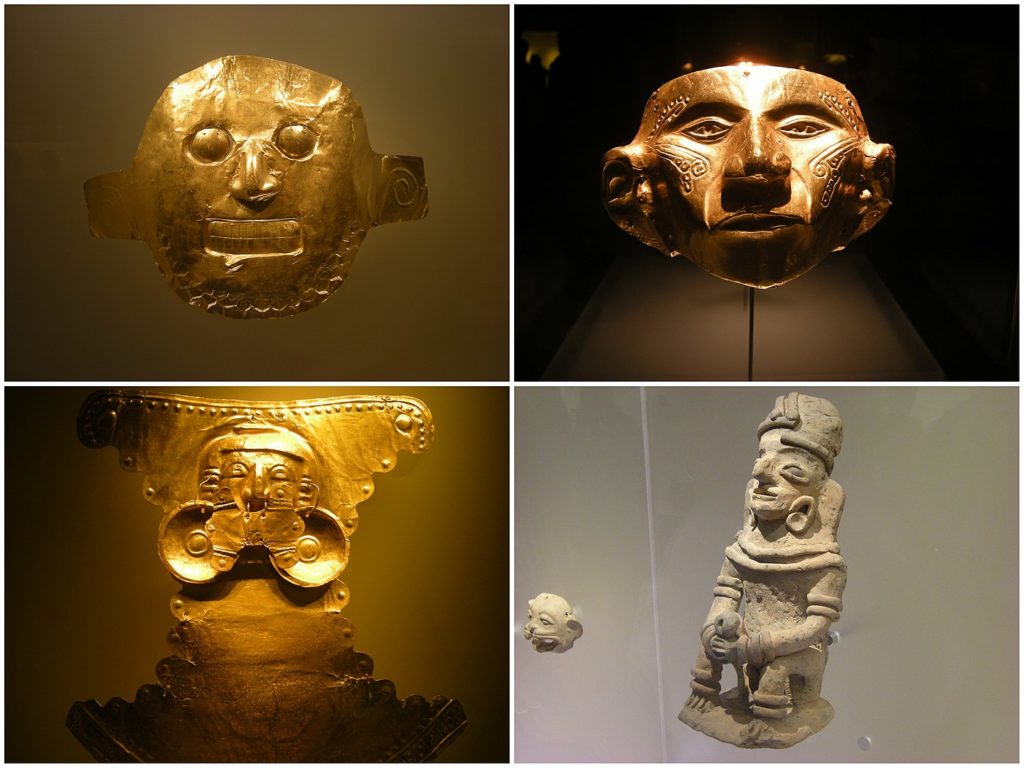
The museum has a collection of 55,000 pieces, 6,000 of which are on display in their expanded building. There are bilingual descriptions of almost all exhibits. The first floor houses the museum’s main entrance, a shop, and a restaurant.
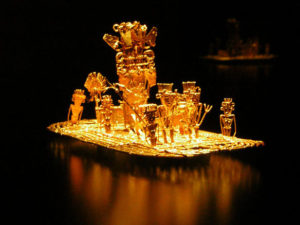
Exhibitions begin on the second floor. The main room is called “People and Gold in pre-Hispanic Colombia”. Glass vitrines display goldsmiths’ work from the different cultures which inhabited Colombia before the Spanish colonists arrived. The permanent exhibition is divided into different halls for every culture: Calima, Quimbaya, Muisca, Zenú, Tierradentro, San Agustín, Tolima, Tairona, and Urabá, and a special room called “After Columbus” (Después de Colón).
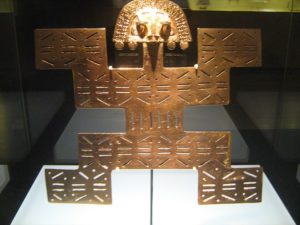
The exposition continues on the third floor, with “The Flying Chamanic” and “The Offering.” The first shows the process of a shamanic ceremony with its different gold pieces, the second is divided into three parts: the “Offering Room”, the “Offering Boat”, and the “Lake”.
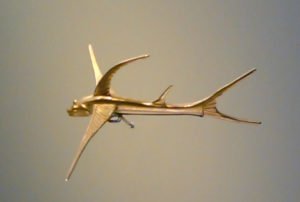
At the end of the exposition, there is a “Profunditation Room” with artistic videos about the most important gold pieces of the museum.
According to Wikipedia





